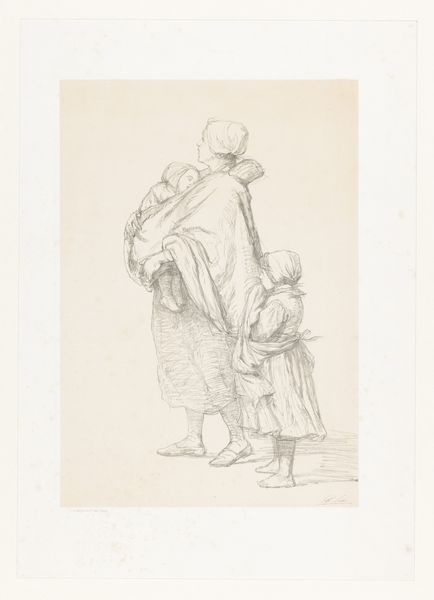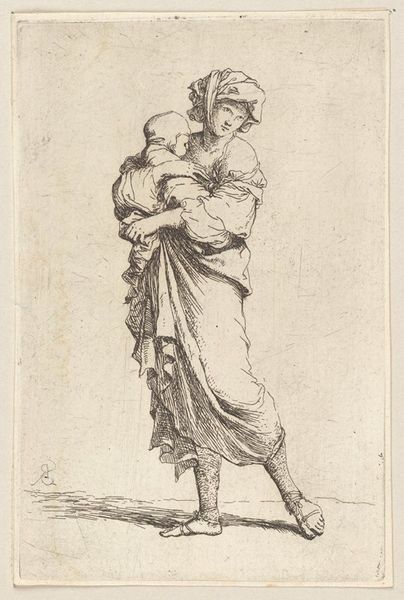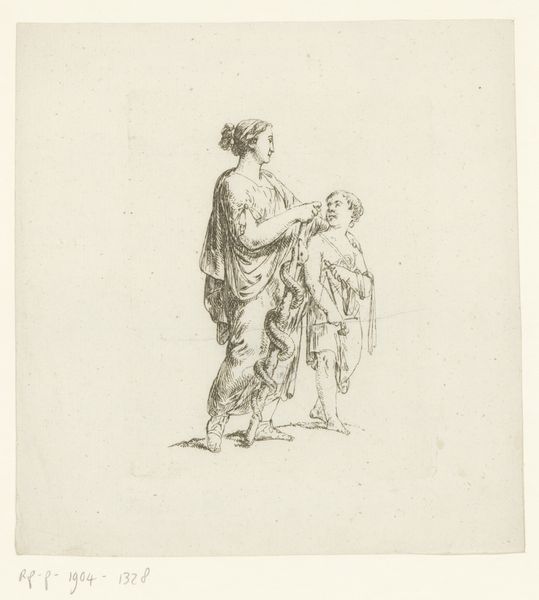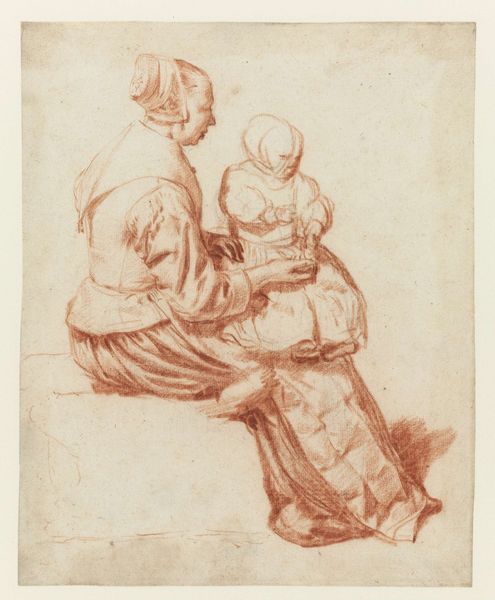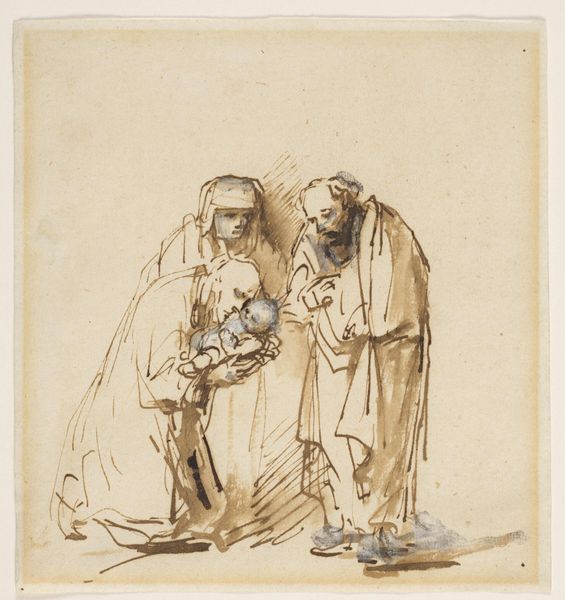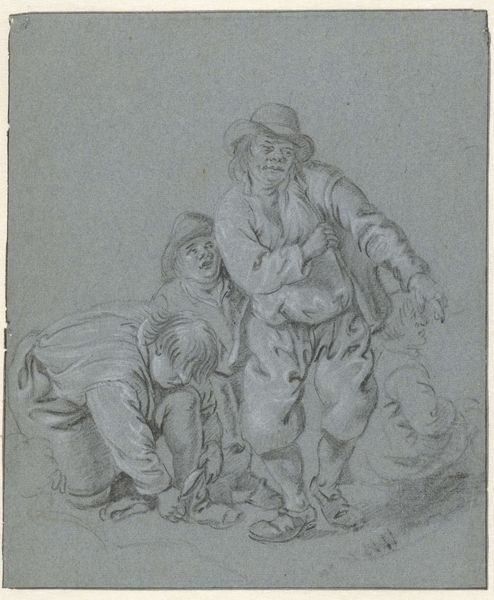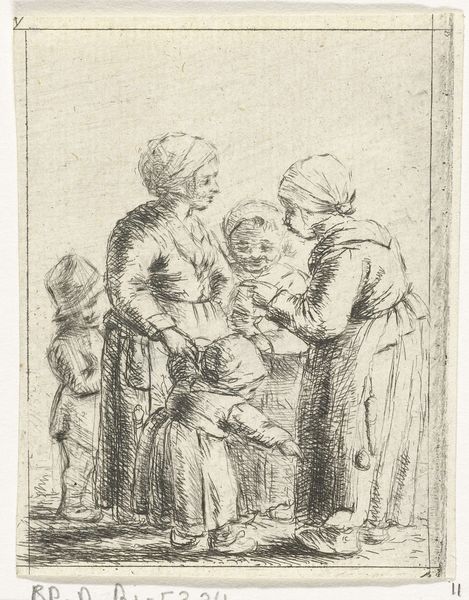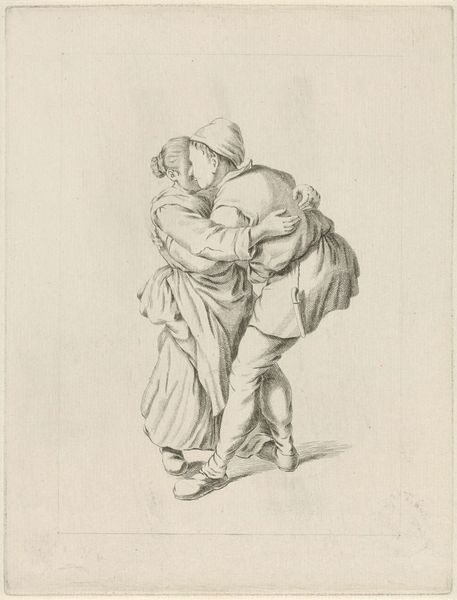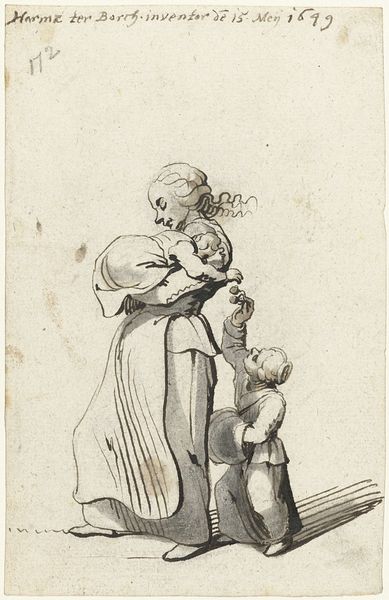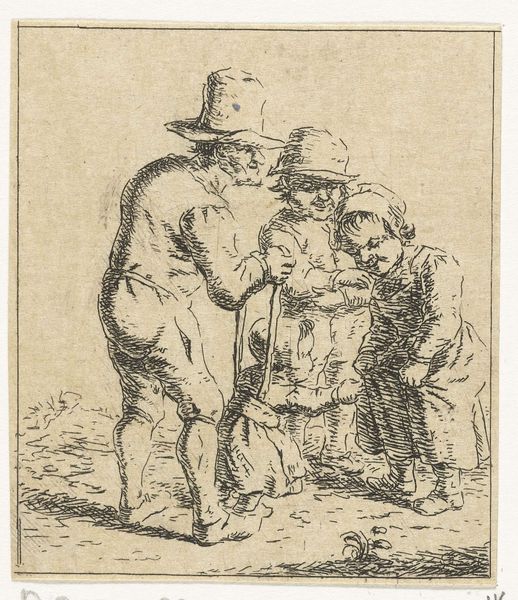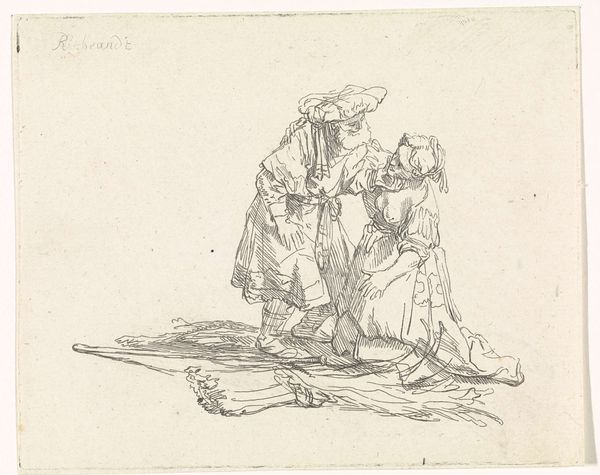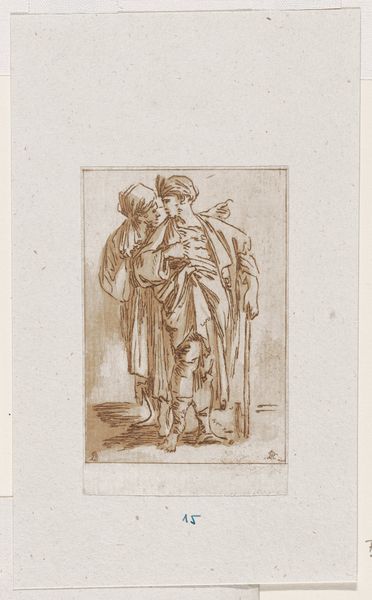
Beggar Woman with her Three Children, after Callot c. 19th century
0:00
0:00
Copyright: CC0 1.0
Editor: This is Adrian Ludwig Richter's "Beggar Woman with her Three Children, after Callot." The etching itself feels stark. I'm curious, what story do you think the materials and production tell us? Curator: Well, Richter's choice of etching, a process allowing for multiple reproductions, democratizes Callot's original vision, making it accessible beyond elite circles. This act of replication shifts the focus to the consumption and dissemination of the image of poverty itself. Editor: So, it's less about the artistry, and more about the social implications of replicating and distributing this image of poverty? Curator: Precisely. It forces us to consider the societal gaze upon the working class, and how art functions within a system of observing and consuming hardship. What does it mean to reproduce and, in effect, commodify the image of a beggar woman? Editor: I hadn't thought about it that way. It really highlights how the means of production shapes our understanding. Curator: Exactly. By examining materiality, we can really understand the labor and social context.
Comments
No comments
Be the first to comment and join the conversation on the ultimate creative platform.
